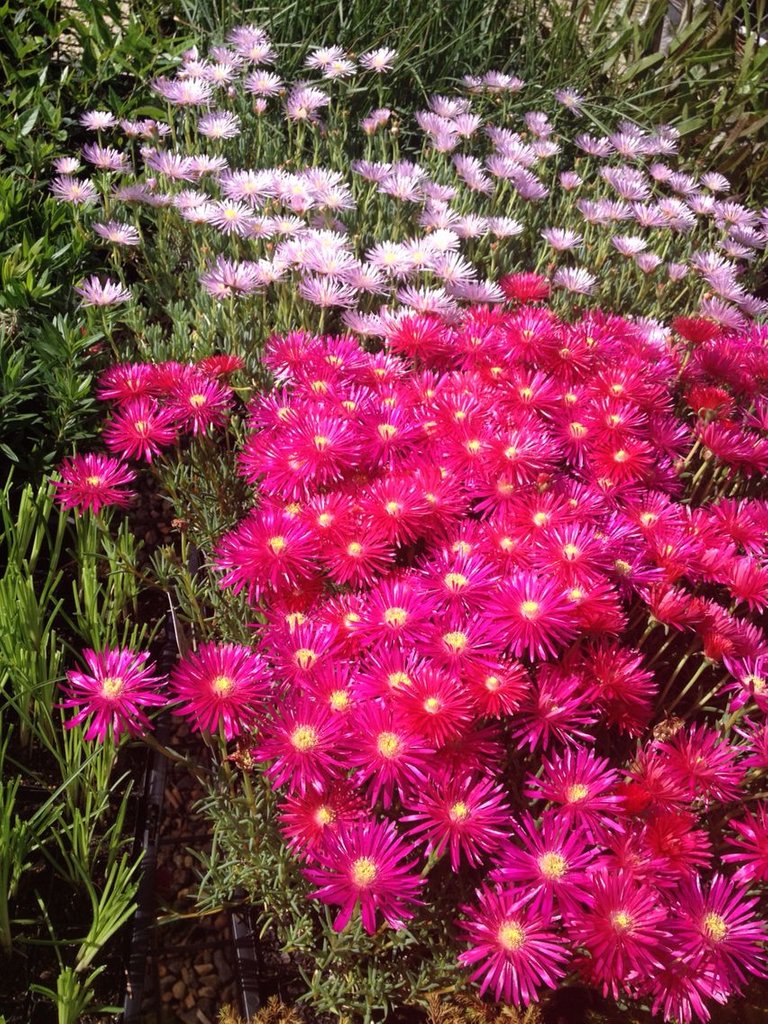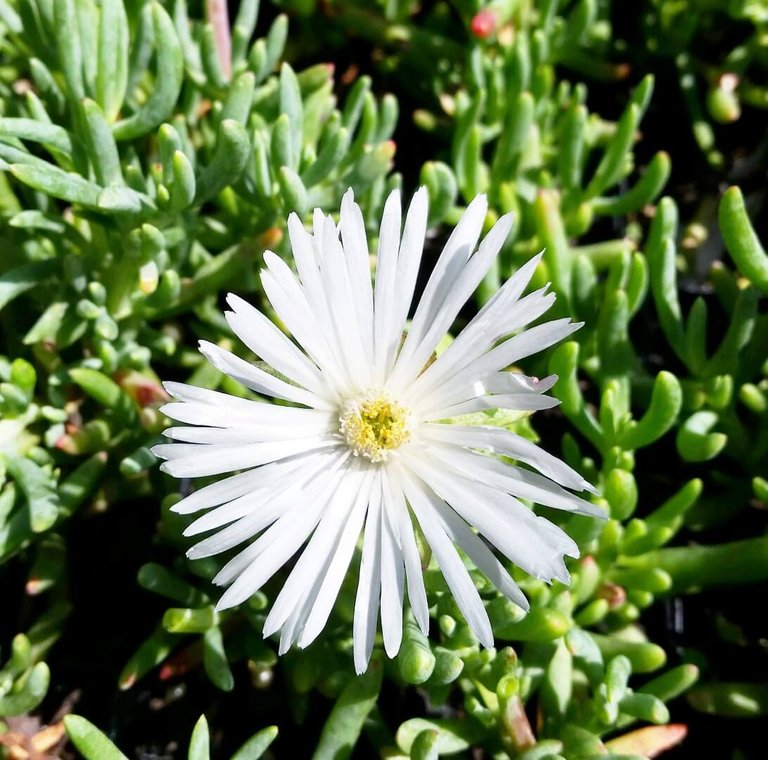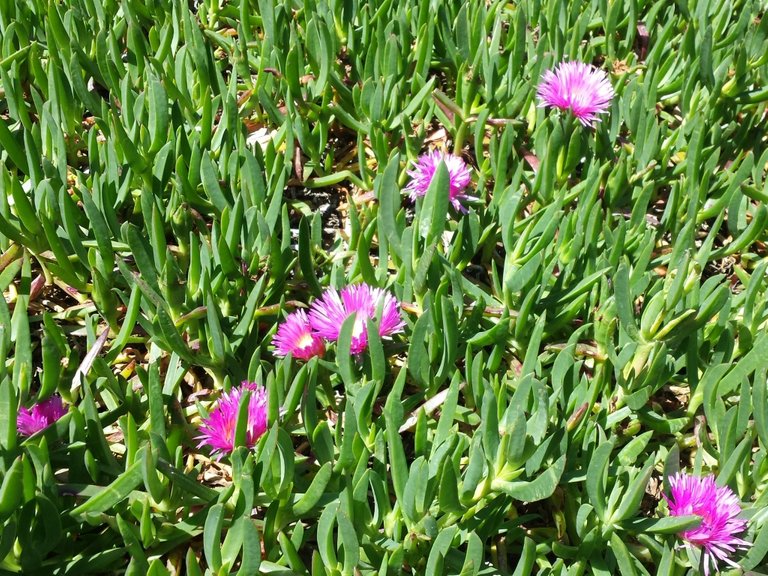If you’ve walked over a sand dune on the way for a swim on a summer’s day in Eastern Australia you may have noticed a succulent plant with a spectacular bright pink flower growing beside the path.Chances are it was Carpobrotus glaucescens (also known as pigface, ice plant or angular sea fig). And you might be surprised to learn that not only is it native to Australia but it is also edible. The red-purple fruit has a flavour described by some as like salty strawberry or kiwi fruit and by others as like salty apples.
Its thick, fleshy leaves can also be eaten – raw or cooked (the roasted leaves may be used as a salt substitute) and the juice from the leaves can be used to soothe stings or burnt skin2. The juice from the leaves can be mixed with water and used as a gargle for sore throats and mild bacterial infections of the mouth. The fruit has also been used as a laxative.


The prostrate, creeping succulent is one of about 20 species of the genus Carpobrotus, most of which are native to South Africa. Six are indigenous to Australia and this includes C. glaucescens which grows naturally in coastal areas on sand dunes in NSW, Queensland and Victoria. You might get confused if you visit a garden centre looking for pigface as you will mostly find Mesembryanthemum, the genus in which Carpobrotus used to be included. There are 25 species of Mesembryanthemum mostly from Europe but also South Africa. Three species have naturalised in Australia. They are similar to Carpobrotus and are edible too.
![carpobrotus-rossii_native-pigface-1.jpg]
( )
)
[Siurce]https://www.sgaonline.org.au/pigface-carpobrotus-glaucescens/
You are viewing a single comment's thread from: